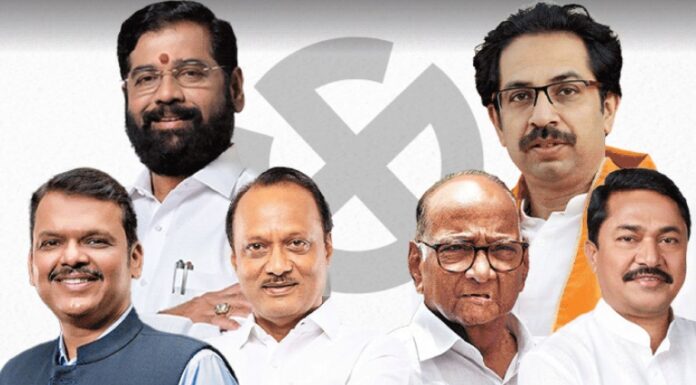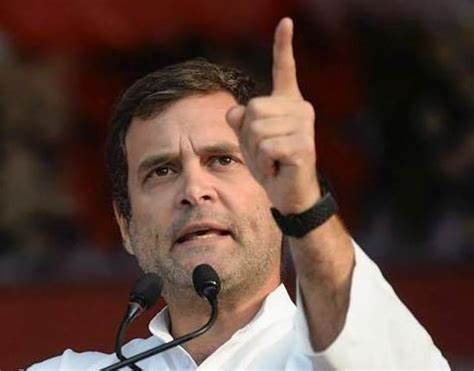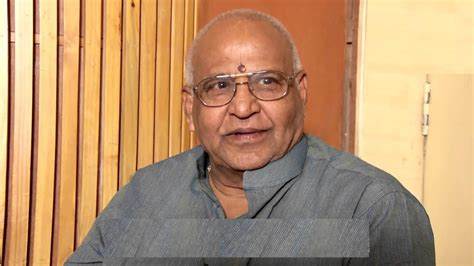Is it Mahayuti or Maha Vikas Aghadi?
Among all parties Ajit Pawar is the safest player
(Prashant Lagudu from Mumbai)
The campaign phase of Maharashtra Elections came to an end, giving raise to the curtain raiser event of Maha Election on 20th November. The fiery speeches, emotional touch, benevolent connect, troll armies, propaganda missionaries are all currently on a mission to rest until the big day of Maha Election.
Now, the most promising question even before the dawn of election day is, who is going to triumph in the Maharashtra Election battle. The mood of the voter is determined by the pre-poll surveys, provide differing projections about the balance of power between the ruling Mahayuti alliance (BJP, Ajit Pawar-led NCP, and Eknath Shinde’s Shiv Sena) and the opposition Maha Vikas Aghadi (MVA, including Shiv Sena-UBT, Congress, and Sharad Pawar’s NCP).
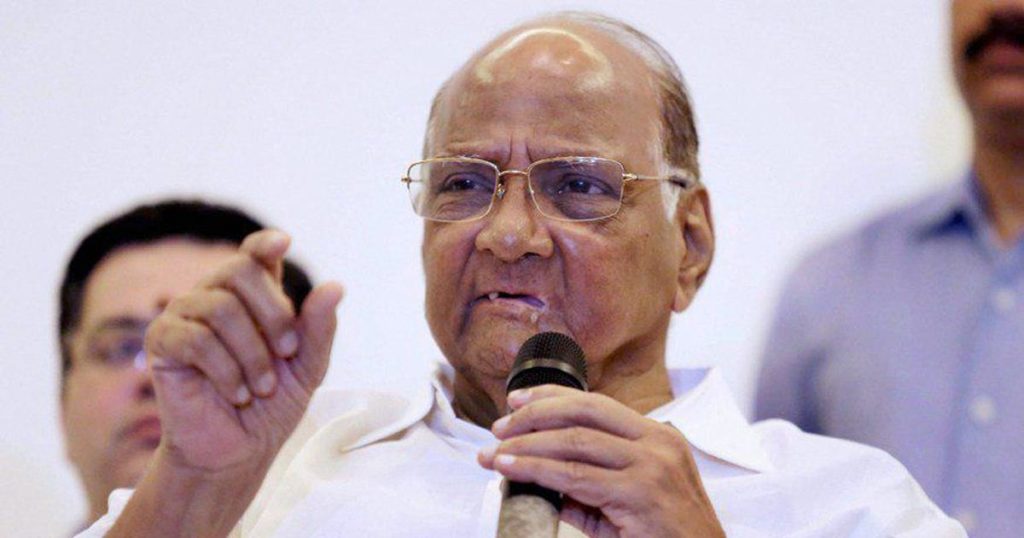
It is obvious pre-poll surveys determine the voter mood, but past errors in similar polls, such as those for elections in Haryana and Madhya Pradesh, highlight the need for cautious interpretation. Factors like voter turnout, late swings, and ground-level dynamics often disrupt predictions.

Based on a few poll surveys, the mood of the public is balanced on both the side of MVA and Mahayuti. A Poll survey predicted the MVA winning 151–162 seats, crossing the majority mark in the 288-seat Assembly. The Mahayuti is projected to secure 115–128 seats, with others accounting for 5–14 seats. In contrast, a Matrize poll favors the Mahayuti, estimating 145–165 seats for them, while the MVA may win 106–126 seats.
The key findings from the voter sentiment from Maharashtra are:
- Backlash Against Polarization: BJP’s attempts to polarize are backfiring for the NDA, as voters are focused on issue-based politics, especially around agriculture, employment, women’s safety, and inflation.
- Anti-Incumbency Against BJP: BJP faces significant anti-incumbency, with Fadnavis blamed for various state issues. Eknath Shinde remains the most popular NDA leader.
- Maharashtra vs. Gujarat Sentiment: The Maharashtra-Gujarat rivalry is a crucial emotional factor in this election.
- OBC Shifts: OBCs are moving toward the NDA in greater numbers compared to the last Lok Sabha election, though consolidation is incomplete as many prioritize other pressing issues.
- Caste Alignments: Marathas largely support the MVA; OBCs are divided, partly due to agricultural distress, while SC support consolidates around the MVA.
- Rural Distress: Low prices for crops like soybean and cotton highlight the severe agricultural challenges in rural areas.
- Congress Strengthening: Congress is emerging as the largest party and the main alternative to the BJP, though it struggles with visibility.
- MVA Campaigning Boost: Campaigning by MVA leaders is energizing party workers and bolstering morale.
- Weak Links in Alliances: The Mahayuti alliance faces vote-cutting issues, with NCP’s Ajit Pawar as the weakest link. Meanwhile, UBT is seen as a weaker link within the MVA, heavily relying on Congress’s core vote.
- Diminished Impact of Vote-Cutters: Parties like VBA and MIM are unlikely to have a significant impact this time, though rebels pose a greater challenge
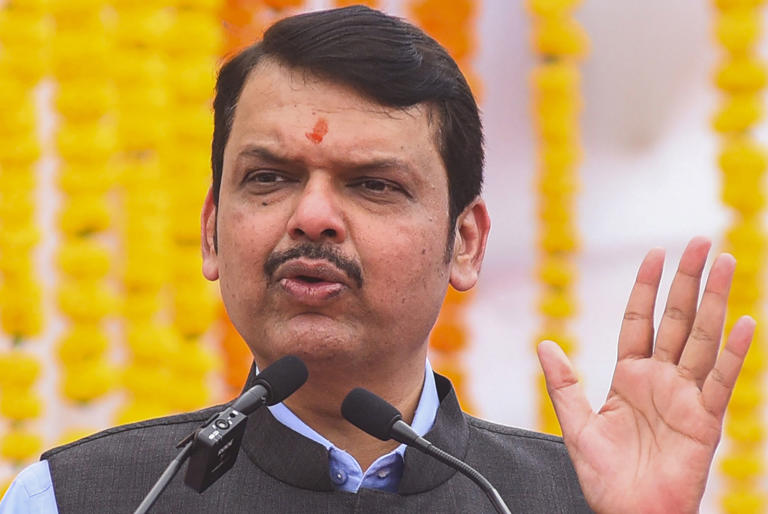
The election’s outcome will depend on several key issues, including Maratha reservation demands, economic performance, rural distress, and socio-economic schemes such as women’s welfare programs and youth employment initiatives. While surveys provide a snapshot of voter sentiment, the dynamic nature of electoral politics in Maharashtra—shaped by caste, regional, and developmental issues—means the actual results may diverge significantly from predictions.
Maharashtra’s Social Setup is Dissimilar to Haryana:
The 2024 Maharashtra Assembly elections present a unique challenge for the BJP-led Mahayuti, with its complex socio-political landscape. Unlike states like Haryana, where polarising narratives have been more effective, Maharashtra’s diverse voter dynamics and entrenched regional issues make large-scale community polarisation difficult.

Maratha – OBC Dynamics
- The Maratha reservation issue remains a critical challenge. Leaders like Manoj Jarange Patil have solidified the Maratha community’s grievances, creating strong anti-BJP sentiments. The Marathas, comprising 33% of the state’s population, are likely to consolidate their votes in favour of the MVA.
- The OBC community, representing 37%, is fragmented across various caste groups, reducing the likelihood of a unified pro-Mahayuti swing. In Vidarbha, Kunbi’s (a subgroup within the Marathas categorised as OBCs) have shown affinity toward Congress, which could bolster the MVA’s prospects.
Dalit, Muslim and Kunbi(DMK) Voters
- These groups played a significant role in the BJP’s setback in the Lok Sabha elections earlier this year. Their dissatisfaction with the Mahayuti government’s policies and communal polarisation strategies is likely to persist, favouring the MVA.
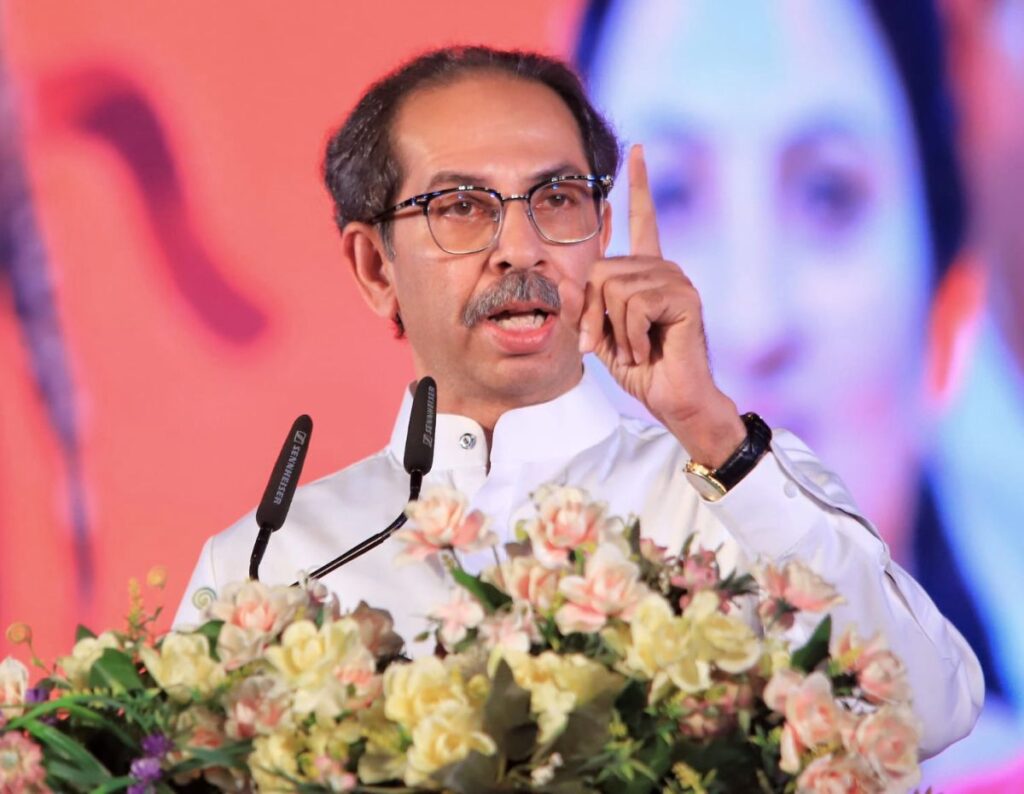
Vidarbha- A Battlefront
- Vidarbha, historically a swing region, appears to be leaning towards the MVA, thanks to strong Congress and NCP ground campaigns and agrarian issues resonating with rural voters. The BJP’s performance here in past elections has been inconsistent, and local dynamics could significantly impact the outcome.
Fragmented Opposition Advantage
- Unlike Haryana, where fewer political players allowed for clearer alignments, Maharashtra’s multi-party contests dilute the BJP’s ability to polarize votes effectively. Smaller regional parties also cut into BJP’s potential vote share.
In conclusion, while the BJP’s organizational strength and Mahayuti’s alliance provide a robust framework, the anti-incumbency sentiment among Marathas, fragmented OBC support, and alignment of Dalit-Muslim voters with the MVA create a steep uphill battle for the ruling alliance in Maharashtra.
Social Movement Impacting Politics of Maharashtra
Maharashtra’s deep-rooted progressive traditions, grounded in anti-casteist and socially inclusive ideologies, present a significant barrier to the BJP’s Hindutva strategy in the 2024 Assembly elections. Historically, the state has been shaped by figures like Shivaji, Jyotiba Phule, Shahu Maharaj, and Dr. B.R. Ambedkar, who championed equality and social justice, fostering a socio-political culture resistant to communal polarisations.
Maharashtra’s electorate, shaped by centuries of progressive thought, challenges the BJP’s dual reliance on Hindutva and economic populism. While Hindutva rhetoric may consolidate certain voter bases, it risks alienating larger groups influenced by the state’s egalitarian traditions. This dynamic underscores the BJP’s uphill battle to retain influence in one of India’s most politically nuanced states.
The challenges for the Mahayuti alliance in the 2024 Maharashtra Assembly elections extend beyond external opposition, stemming also from internal discord among its coalition partners—BJP, Shinde’s Shiv Sena, and Ajit Pawar’s NCP faction. This lack of cohesion contrasts sharply with the Maha Vikas Aghadi’s (MVA) comparatively better coordination and grassroots engagement, creating a tough electoral environment for the ruling alliance.

(Author is a Poll Strategist and Campaigning specialist)

